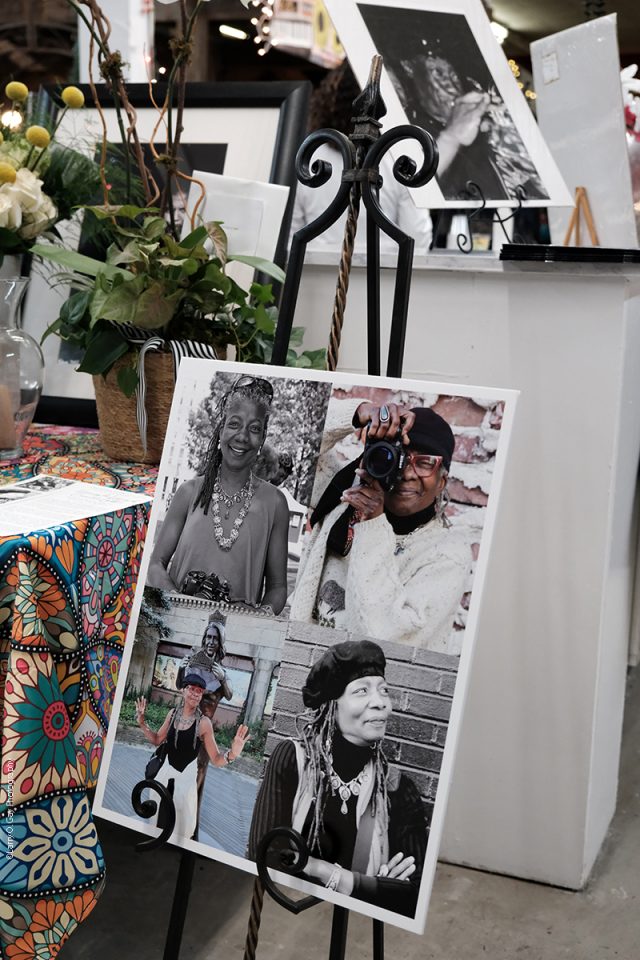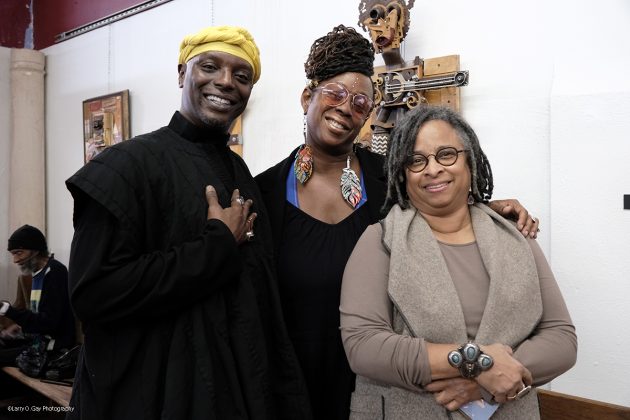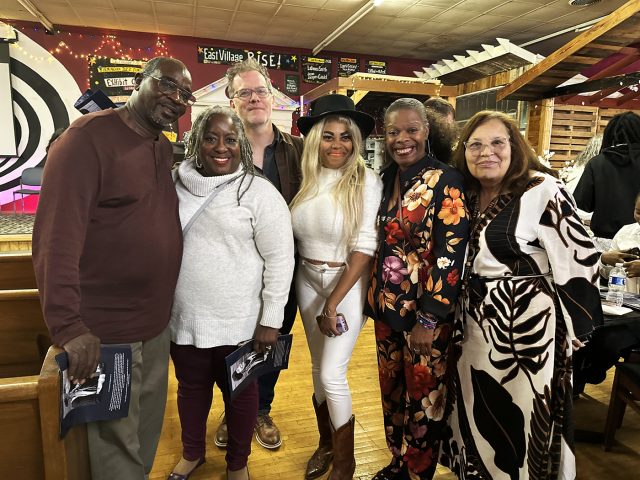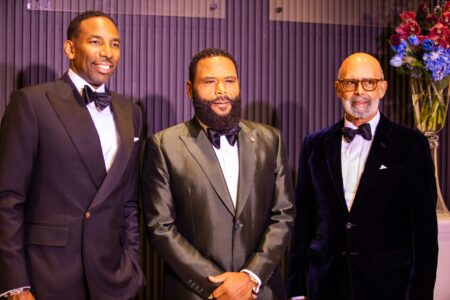By Shauna Stuart
The Birmingham Times
Cassandra Griffen, an activist and renowned documentary photographer whose many notable images included the Civil Rights Movement as well as Sun Ra Arkestra, was celebrated on Sunday by a host of Birmingham artists, historians, and musicians. Mrs. Griffen died on Oct. 23. She was 75.
Family and friends filed into East Village Arts, the neighborhood’s avant-garde nonprofit artist collective, a little before 2 p.m. The gathering was jovial and full of music. Griffen was a longtime photographer of the nation’s cultural and political scene. Her family outfitted the vibrant community arts space as a testament to her life’s work.
Rene Kemp-Rotan, an urban designer and master planner, was hosting an outdoor civic engagement presentation in 2004 about the plans for Railroad Park, when Mrs. Griffen approached her after the speech. The two women, along with Carol Clarke, then Director of the Birmingham Department of Economic Development, would later bond over a mutual love of art, jazz, New York, and cultural preservation.
“She was literally recording life as it happened,” said Kemp-Rotan. “Particularly in the Black political community.”
Birmingham native Wilhelmina Thomas, a textile artist and historian, remembered Mrs. Griffen as a person with a wealth of information. “A lot of the anecdotal stories that I got, I got from her. I got ideas of where to research … and she is a debutante. She just went out and was an ambassador to the world for Birmingham, of what out African American potential is.”

A montage of portraits of Mrs. Cassandra Griffen. (Larry Gay Photography)
At the celebration, a gallery of Mrs. Griffen’s photographs lined the front of East Village Arts. One table sported a 2016 image of Black Lives Matter demonstrations, alongside colorful portraits of members of SunRa’s Arkestra.
Nearby sat black and white photographs of singer and Civil Rights icon Nina Simone, outfitted in a one-shoulder dress and holding a shekere above her head as she danced. Another part of the gallery was dedicated to Mrs. Griffen’s photographs of revered Alabama icons– black and white portraits of legendary blues musician Henry “Gip” Gipson, Civil Rights leader Fred Shuttlesworth, and a candid side profile of lauded poet Sonia Sanchez in conversation with a small group.
Near the back, a quartet of beloved Birmingham jazz musicians– Bo Berry, Willie Jackson, Bernard McQueen, and John Nuckols played jazz standards to welcome attendees as they settled into their seats.
Cassandra Griffen was born on Jan. 25, 1950 in Wilson, N.C. Her parents, Charles Richard Griffen and Bertha Baynes Griffen, were educators in the state’s public school system. Mrs. Griffen started taking photographs at family gatherings when she was 11. Over the decades, she continued to develop her craft and merge her talent for photography and storytelling with her passion for social justice. In New York, Mrs. Griffen took on roles as a gerontologist and an ombudsman, advocating for the rights of elders in nursing homes.
Griffen also served as a member of the New York state human rights commission, working to draft fair housing policies. During her tenures in New Jersey and New York, she photographed the arts and culture scenes. In the late 1970s, while living in New York City, she frequented the famed CBGB music club in New York when she met the SunRa Arkestra.
Mrs. Griffen developed a bond with the group and eventually developed a reputation as the collective’s documentary photographer. Griffen was also the only woman allowed to spend the night in the Arkestra house in Philly’s Germantown neighborhood. Sun Ra, the Arkestra’s pioneering– but notoriously strict– bandleader, famously barred women from spending the night in the compound. That rule is a fact Sun Ra Arkestra saxophonist and composer Knoel Scott recalls with detail.
“Sun Ra didn’t want women staying with us. He said they break up bands,” but he trusted Cassandra, Scott said with a laugh, during a recent phone call from London. “ … Cassandra could stay the night. She was the only woman who Sun Ra didn’t mind staying with us.”

From left: Germaul Barnes, Yogi Dada, and Carol Clarke came to celebrate Mrs. Cassandra Griffen. (Larry Gay Photography)
To the Arkestra, Mrs. Griffen was more than a documentarian and friend. She was also committed to preserving the artistic legacy of Sun Ra and ensuring that his message of liberation for Black people didn’t get erased as more audiences embraced Sun Ra’s music and image.
“I really appreciated that,” said Scott. “She celebrated Sun Ra as one of the legends in the African American community and African American culture and the continuation of the African American tradition.”
In 1999, after more than 40 years in the northeast, Griffen moved to Birmingham to be close to her uncle, JT McKinney, one of the first African American jitney bus owners in Alabama, said Mrs. Griffen’s daughter Oneika Brooks DeJoy.
“She moved to Birmingham to take care of him and write a story about him,” said DeJoy.
In the South, Mrs. Griffen continued to photograph art, culture, and historic scenes in Alabama and around the region. As she developed a rapport and relationships with mayors, Civil Rights luminaries, and city leaders, her portfolio expanded to include photographs of Fred Shuttlesworth, Coretta Scott King, and former Birmingham Mayor William Bell. Griffen frequented jazz clubs and Gip’s Place, the historic juke joint in Bessemer. She also regularly photographed artist Joe Minter and his African Village in America.
The connections would eventually lead to exhibitions at storied Birmingham institutions, including the Birmingham Civil Rights Institute’s Odessa Woolfolk Gallery.

From left: David Stewart, Wilma Stewart (Note: Wilma Stewart is Sun Ra’s niece), Burgin Mathews, Oneika Brooks DeJoy, Rene Kemp-Rotan, and Stephonia Taylor McLinn pose for a photograph at Cassadra Griffen’s memorial service at East Village Arts on Nov. 9, 2025. (Shauna Stuart, For The Birmingham Times.







